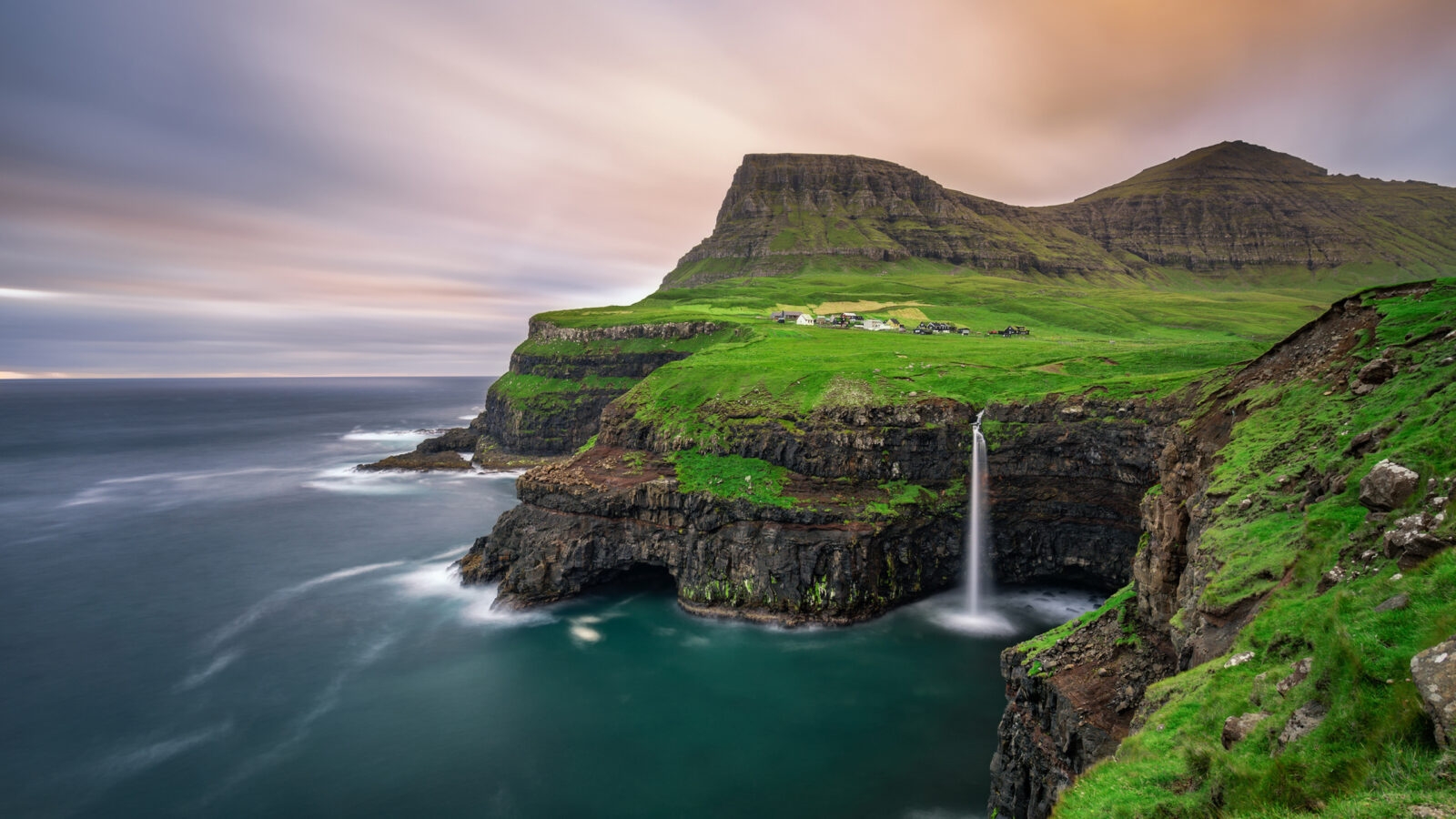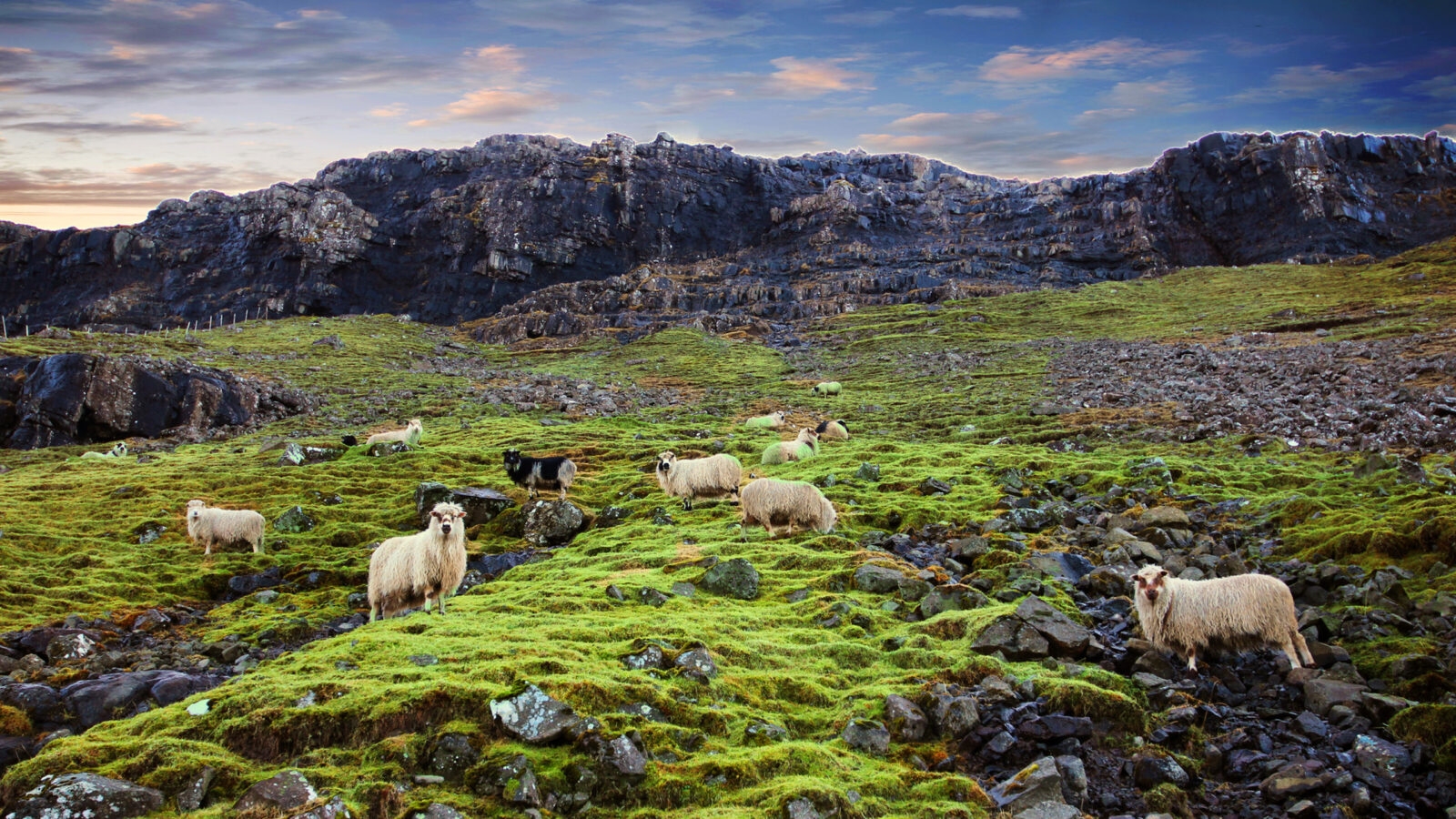Fascinating culture and epic scenery
Halfway between Scotland and Iceland and scattered across the North Atlantic Ocean are the Faroe Islands. This chain of 18 volcanic islands often falls under the radar but those who venture to the archipelago are rewarded with sublime scenery, incredible wildlife and warm and welcoming people, eager to show you their way of life.
A self governing nation under the sovereignty of Denmark, these islands have their own very distinct identity and a proud Faroese culture. The name Faroe Islands first appeared as Faereyjar, meaning ‘sheep islands’ – not a surprising name given sheep outnumber the human population of 50,000. All but one of the islands are inhabited, with roughly half the islanders living in the capital, Tórshavn. 18 may sounds like a lot, but the islands are well connected by roads, bridges and tunnels making exploration a fun and manageable task.
When it comes to scenery, the Faroe Islands really deliver. Lush green valleys, sheer cliffs and rolling moorland make this a veritable playground for hiking, cycling, climbing and horse riding. The abundance of water also makes this a wonderful place to kayak and rappel. The towns and villages themselves are picture perfect with wooden churches and clusters of colourful houses, some with idyllic grass roofs.
Being an isolated archipelago has meant the Faroese are a dab hand at making the best of what they have. And, when it comes to food, they don’t just get by – they thrive. The foodie scene in the Faroe Islands is astounding, food having always been incredibly important. There are some great restaurants demonstrating the islands’ rich culinary heritage with fermented meat and fish featuring heavily, alongside root vegetables, herbs and wild plants.
A trip to the Faroe Islands is to discover a truly unique part of the world. For those with a keen sense of adventure and a interest in culture, this is a destination that should be firmly on your bucket list.
The Jacada Difference
Seamless organisation, every step of the way
Journeys as meaningful as they are memorable
Remarkable stays, handpicked by our experts
Luxury accommodation in Faroe Islands
Why book with Jacada?

Personalised design
We’ll plan your trip around your specific interests, tastes and preferences, providing helpful tips and honest advice based on first-hand knowledge of the destination.

Authentic experiences
Our expert guides and brilliant travel concierges are hand-picked to provide a genuine experience, bringing your destination to life with care and passion.

Responsible travel
Our luxury trips are designed with responsible travel principles that prioritise travel experiences that are both good for you and good for the planet.
Trip Inspiration
Meet your Europe team
Plan your trip to Faroe Islands
Whatever you want from your adventure in Faroe Islands, our team of expert travel designers are ready to help.


Plan with peace of mind
When you book a trip in today’s world there’s a lot to think about. But with the right advice and expert planning, you can do it with confidence.
If you book to travel with us but your plans are impacted by circumstances you can’t control, we’ll change your reservation or cancel your booking for a full credit towards future travel.

























